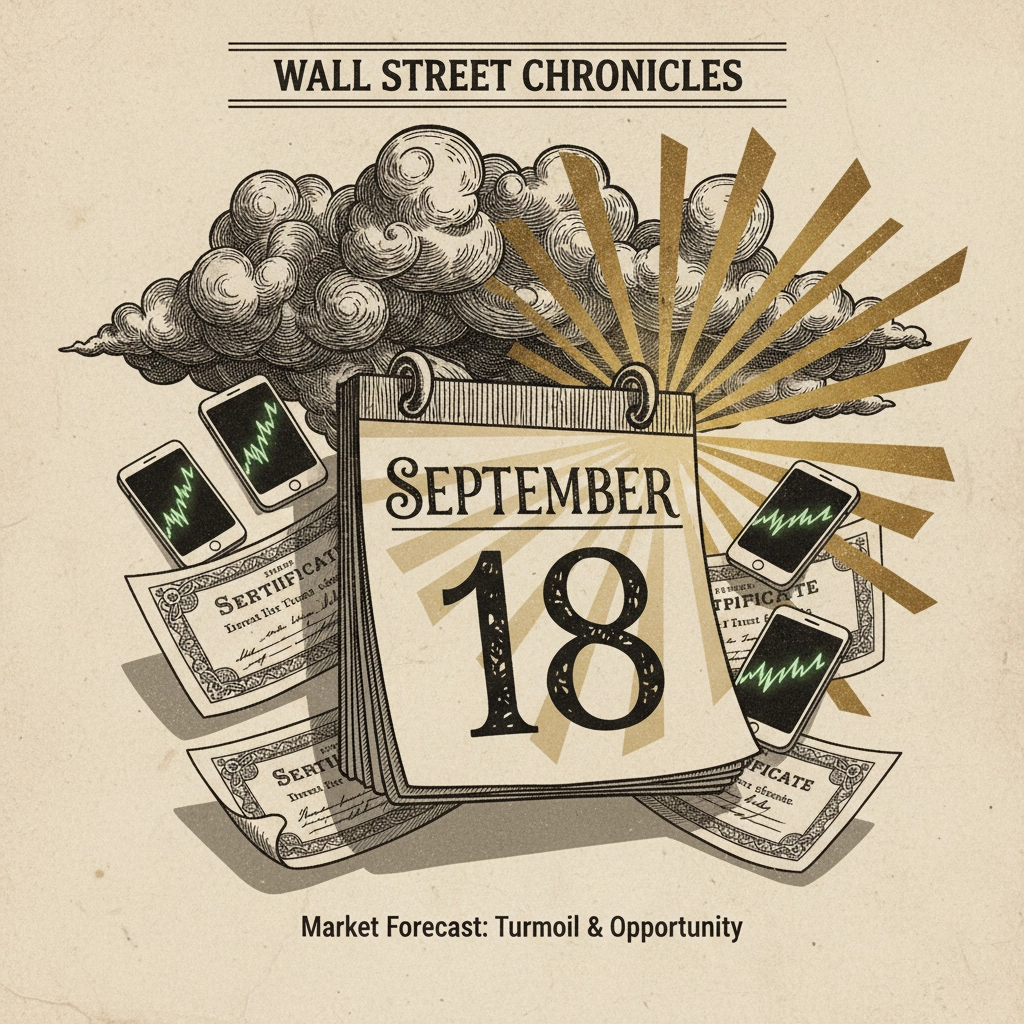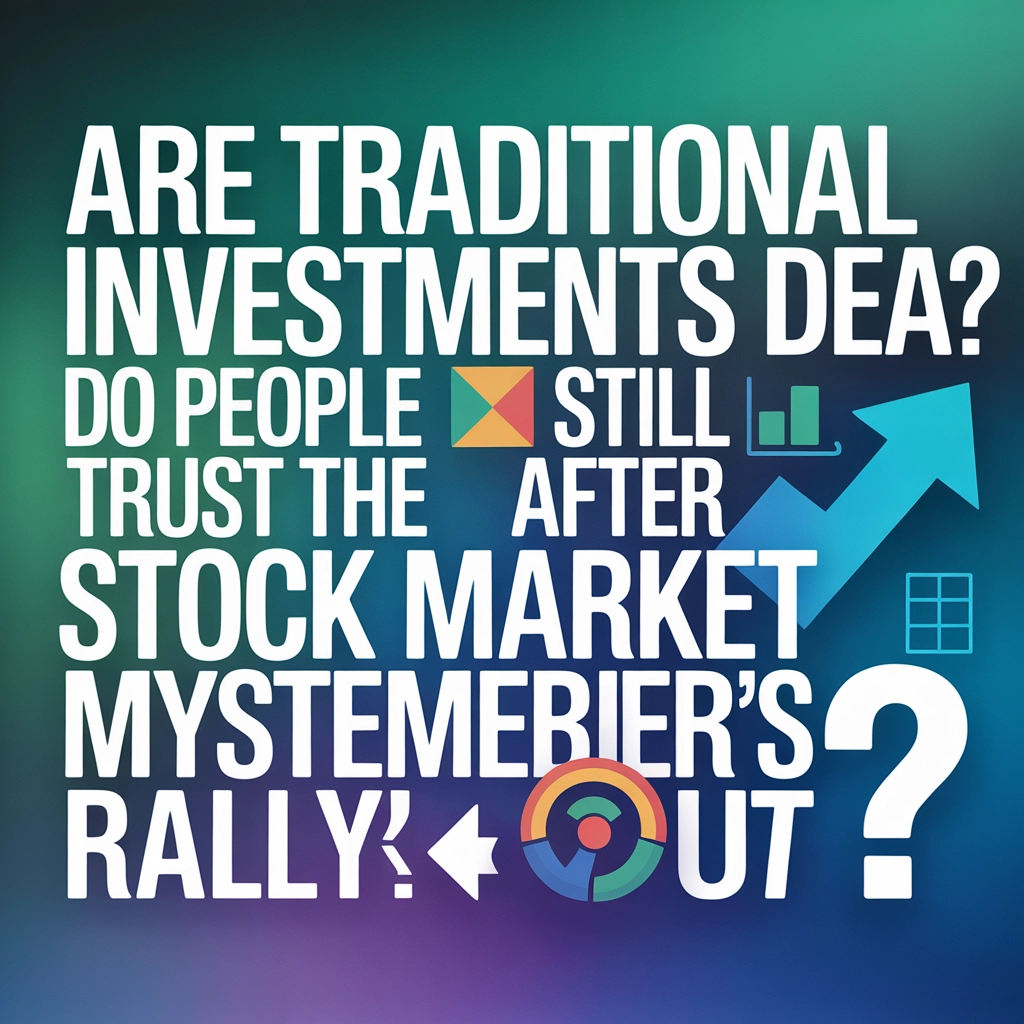Here's the thing about September 2025: everyone's talking about a "mysterious rally," but if you've been watching the markets for a while, you know September's typically when stocks take a nosedive. So what's really going on? Are people losing faith in traditional investments, or are we just seeing the evolution of how smart money moves?
Let me tell you about my neighbor Mike. He's been investing in the same boring index funds for 20 years. Last month, he asked me if he should pull everything out because "the market doesn't make sense anymore." Sound familiar?
The Real Story Behind Traditional Investment Performance
Traditional investments aren't dead – they're just not behaving like they used to. The classic 60/40 portfolio (60% stocks, 40% bonds) that your financial advisor probably recommended? It's having an identity crisis.
Here's what's actually happening: stocks and bonds are moving together way more often than they should. Normally, when stocks go down, bonds go up, giving your portfolio some balance. But now? They're like synchronized swimmers – when one jumps, the other follows.

This shift means the old diversification playbook needs a rewrite. Both equity and fixed income risks have gotten structurally higher, which is fancy talk for "everything's more volatile now." But here's the kicker – despite all this chaos, the fundamental backdrop for stocks remains pretty solid as we move through 2025.
Earnings are still growing (about 7% for large-cap U.S. stocks compared to 2024), interest rates are supportive, and companies are still making money. The problem isn't that traditional investments are broken; it's that they're not enough on their own anymore.
Why Investors Are Still Playing the Game (Just Differently)
So are people abandoning ship? Not exactly. Instead, they're getting creative with their strategies.
About half of institutional investors are now looking beyond traditional stocks and bonds. They're diving into:
- Liquid alternatives that don't follow typical market patterns
- Commodities that actually benefit from inflation
- Digital assets (yes, even after all the crypto drama)
- Real estate and infrastructure projects

The numbers tell the story: alternative investments have exploded from $7 trillion in 2014 to over $18 trillion in 2024. Experts predict this could hit nearly $29 trillion by 2029. That's not people running away from investing – that's people getting smarter about spreading their risk.
Think of it like dating. You wouldn't put all your eggs in one basket with one person, right? Same logic applies to your money. Investors aren't losing trust in traditional markets; they're just not willing to depend on them exclusively anymore.
The September Effect: History vs. Reality
Now, about that "mysterious rally" everyone's buzzing about. Here's where things get interesting – and where social media might be playing tricks on us.
Historically, September is the worst month for stock markets. Over the past 100 years, it's been a consistent underperformer. Financial folks even have a name for it: the "September effect." It happens because of institutional rebalancing, tax-loss selling, and good old-fashioned investor psychology.

But September 2025 feels different, doesn't it? Maybe it's because we're seeing more retail investors who don't follow traditional patterns, or perhaps it's the influence of algorithmic trading that doesn't care about historical trends.
The reality is that seasonal patterns matter way less than you think. If you're investing in solid ETFs and focusing on long-term growth, whether it's September or July shouldn't change your strategy. The fundamentals – economic data, earnings reports, monetary policy – matter more than calendar pages.
What Smart Money Is Actually Doing Right Now
Here's what's really happening behind the scenes. Wealthy investors and institutions aren't panicking about traditional investments being "dead." They're building more sophisticated portfolios.
The new approach looks something like this:
- Keep some exposure to traditional stocks and bonds (they're not going anywhere)
- Add alternatives that move independently from traditional markets
- Focus on assets that can handle inflation (because let's be real, that's not going away)
- Build in some cushioning for when traditional markets get weird

Most equity categories are still trading near historically normal valuations. Translation: stocks aren't wildly overpriced right now. With subdued earnings expectations and reasonable prices, companies actually have a lower bar to beat expectations and surprise investors positively.
The smart money isn't running from traditional investments – it's using them as one part of a bigger, more resilient strategy.
The Evolution, Not Death, of Traditional Investing
Let me share what I think is really happening here. Traditional investments aren't dying; they're being integrated into smarter portfolio designs. It's like how smartphones didn't kill communication – they just changed how we do it.

The 70/30 stock-bond split that dominated pre-COVID investing? That's old news. Modern portfolios look more like Swiss Army knives – multiple tools for different situations. You've got your traditional stocks and bonds for growth and stability, alternatives for diversification, and maybe some commodities or real estate for inflation protection.
The key insight that many investors miss is that uncorrelated returns are becoming the holy grail. You want assets that don't all move in the same direction at the same time. When traditional markets zig, you want some of your investments to zag.
This isn't about losing faith in the stock market. It's about recognizing that the world has gotten more complex, and our investment strategies need to match that complexity. The investors who are thriving right now aren't the ones who abandoned traditional investing – they're the ones who evolved their approach.
The Bottom Line on Market Trust
So, do people still trust the stock market after September's unusual patterns? The answer is nuanced. Trust hasn't disappeared, but it's become more sophisticated. Investors are still putting money to work in markets, but they're being more strategic about how they do it.
The growth in alternative investments doesn't signal a lack of confidence in traditional markets – it signals a demand for better risk management and more diverse return sources. It's actually a sign of a maturing investment landscape where people understand that putting all their money in one type of asset is risky business.
What does this mean for you? Whether you're just starting to invest or you've been at it for years, the message is clear: diversification is more important than ever, but it looks different than it used to. Traditional investments still have a place in your portfolio, but they work best when they're part of a broader strategy that includes non-traditional assets.
Are you ready to evolve your investment approach, or are you still stuck in the old 60/40 mindset?







